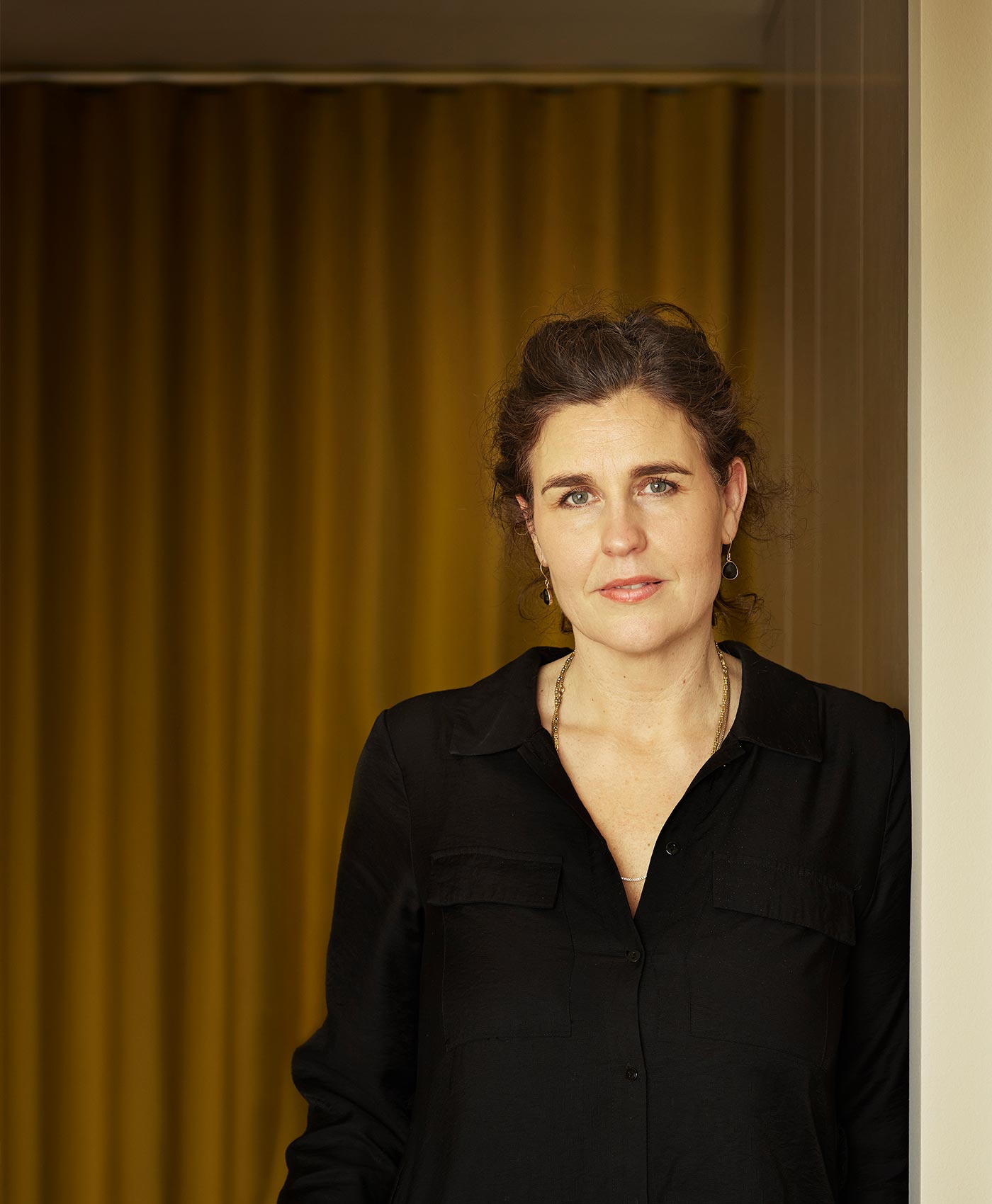
SIDSEL ZACHARIASSEN: 6 WAYS TO PERSONALISE YOUR NEWLY BUILT HOME
“I NEVER LEAVE A HOME WITH WHITE WALLS”
Interior Decorator Sidsel Zachariassen is a true colour connoisseur. She is able to name any shade she encounters and minutely balances hues in order to create a harmonious, coherent colour scheme. And she truly disdains “Igloo White.”
This article takes you on a journey with Sidsel Zachariassen to Islands Brygge in Copenhagen, a location famed for its high-rise buildings that jostle for space and offer coveted views of the inner harbour. Follow us behind the scenes as Sidsel transforms a bland, brand new apartment into a vibrant gem, while sharing her top tips for infusing personality into your new build.
Portrait Sidsel Zachariassen / Photo: Mikkel Adsbøl

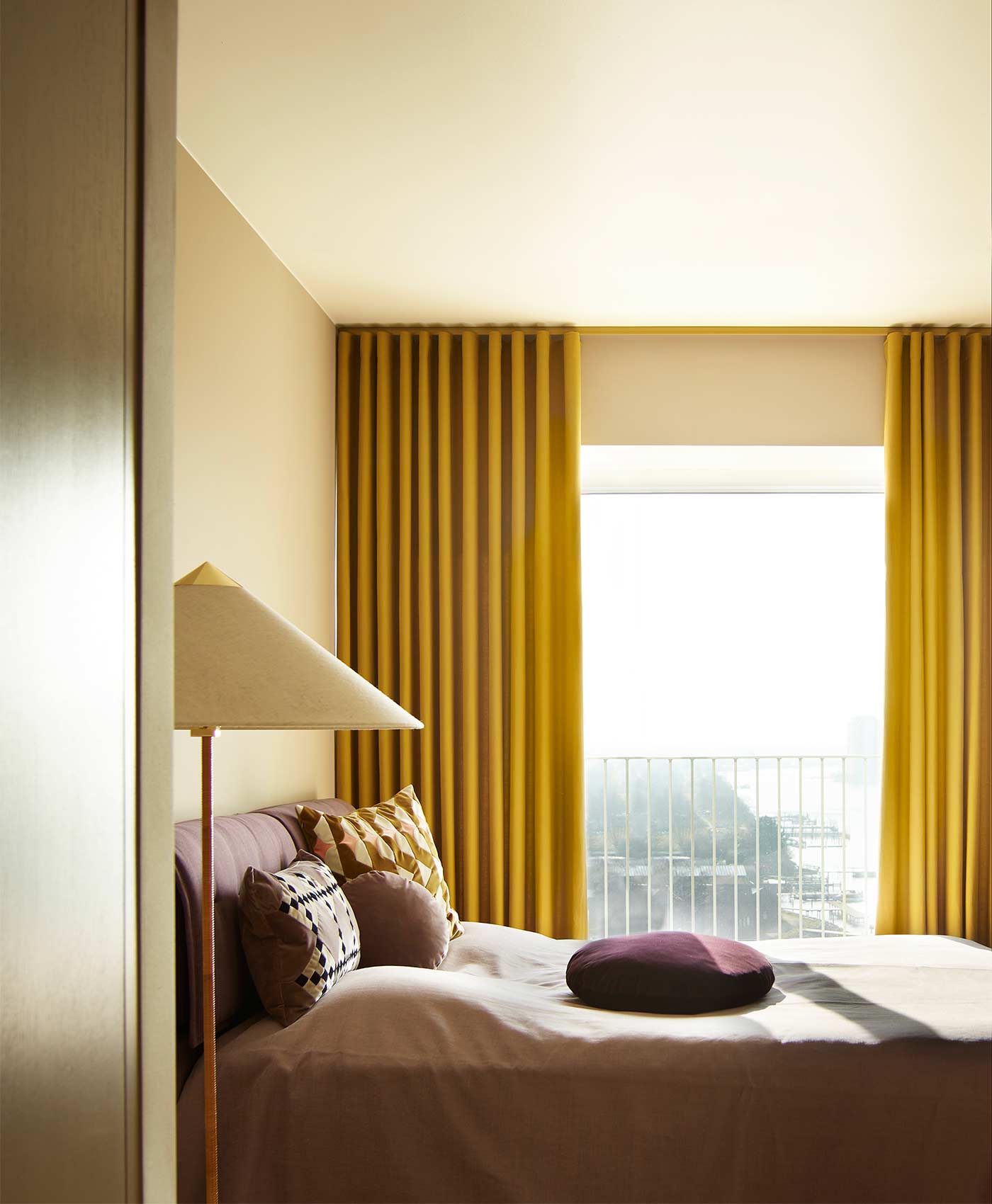
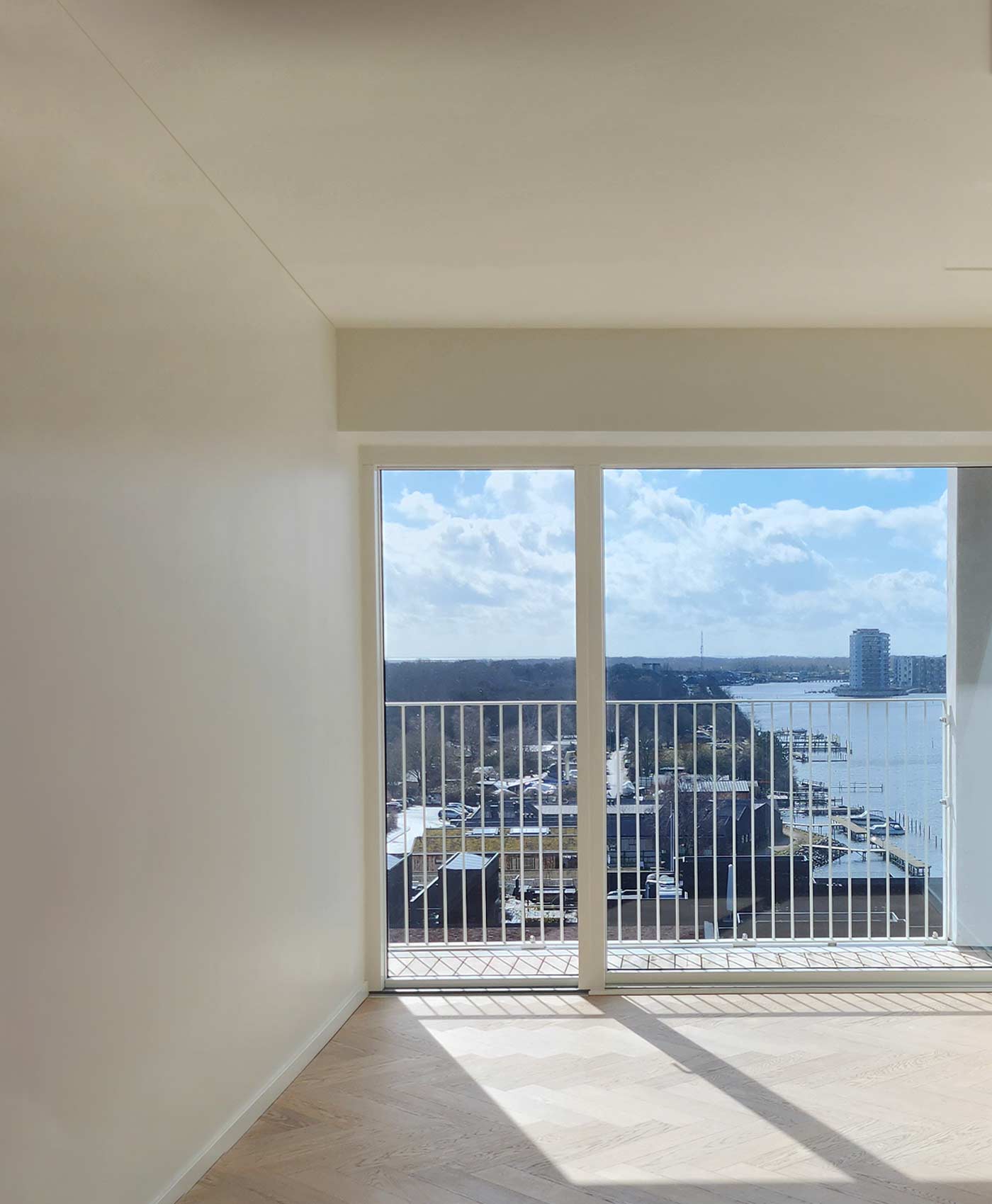
1: ADD COLOUR TO YOUR NEW BUILD
We first meet Sidsel in a newly constructed, oceanside apartment building at Islands Brygge. The apartment, which Sidsel has been hired to decorate, is positioned with a stunning view over the water. The interior is stark white and empty, a blank canvas which is about to undergo a dramatic transformation. On the kitchen counter, an array of colour samples spread out, none of which include white. Sidsel explains that while these colours vary in intensity and tone, each is chosen to complement the space subtly and effectively:
“Adding colour doesn’t mean creating chaos,” she explains, “but rather enriching spaces with a well-curated palette that enhances each area uniquely. To me, the tone-on-tone approach is just as important as the use of contrast.”
“In a bedroom or a dining room, you can usually be more adventurous with colours because these are not busy rooms. Conversely, an entrance hall will always be somewhat chaotic in daily life, and therefore a more subdued colour will help tone it down and create calm.”
Several months later, we are back in the once white and anonymous apartment, which has since undergone a complete transformation:
“For this home, I’ve linked the rooms with a signature colour, using a vibrant yellow to draw a visual connection from the bedroom to the living room, creating a red, or rather a yellow thread”, Sidsel says.
“Instead of a colour, I could also have chosen a specific type of wood to connect the rooms”, she adds.

Stilling® AP 2005 curtain track, custom lacquered in the colour “Moss.”
The yellow-green colour ‘Moss’ from File Under Pop recurs throughout—from bathroom tiles to the curtains and curtain tracks, which were lacquered to match the exact shade and gloss. Sidsel specifically requested custom-coloured curtain tracks to maintain a coherent colour story, ensuring every detail matches harmoniously.
The colour palette also draws inspiration from the surrounding landscape, mirroring the hues of the water, buildings, and sky.
“I never leave a home with white walls,” Sidsel asserts. A statement vividly illustrated by the colourful walls of the apartment at Islands Brygge.
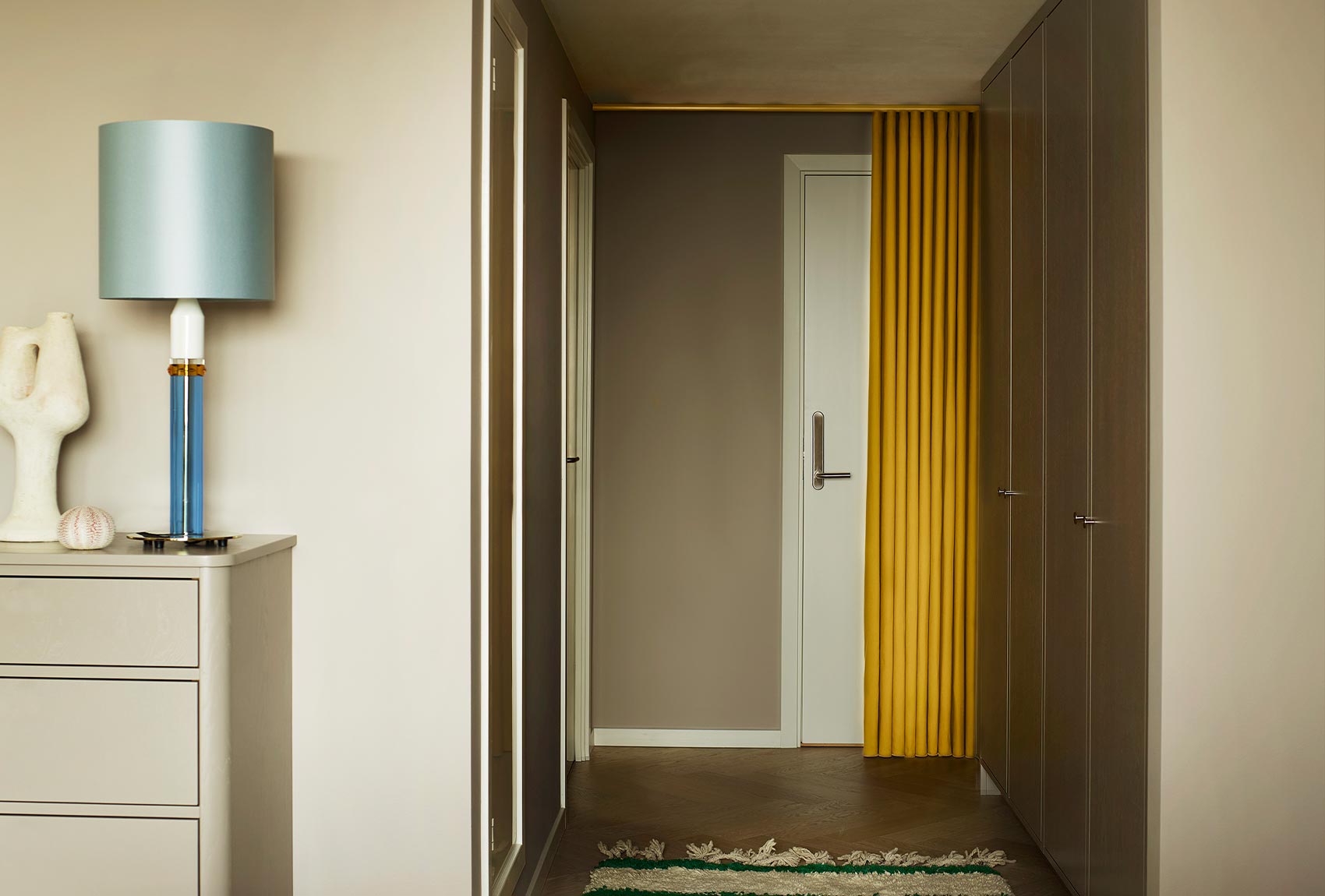
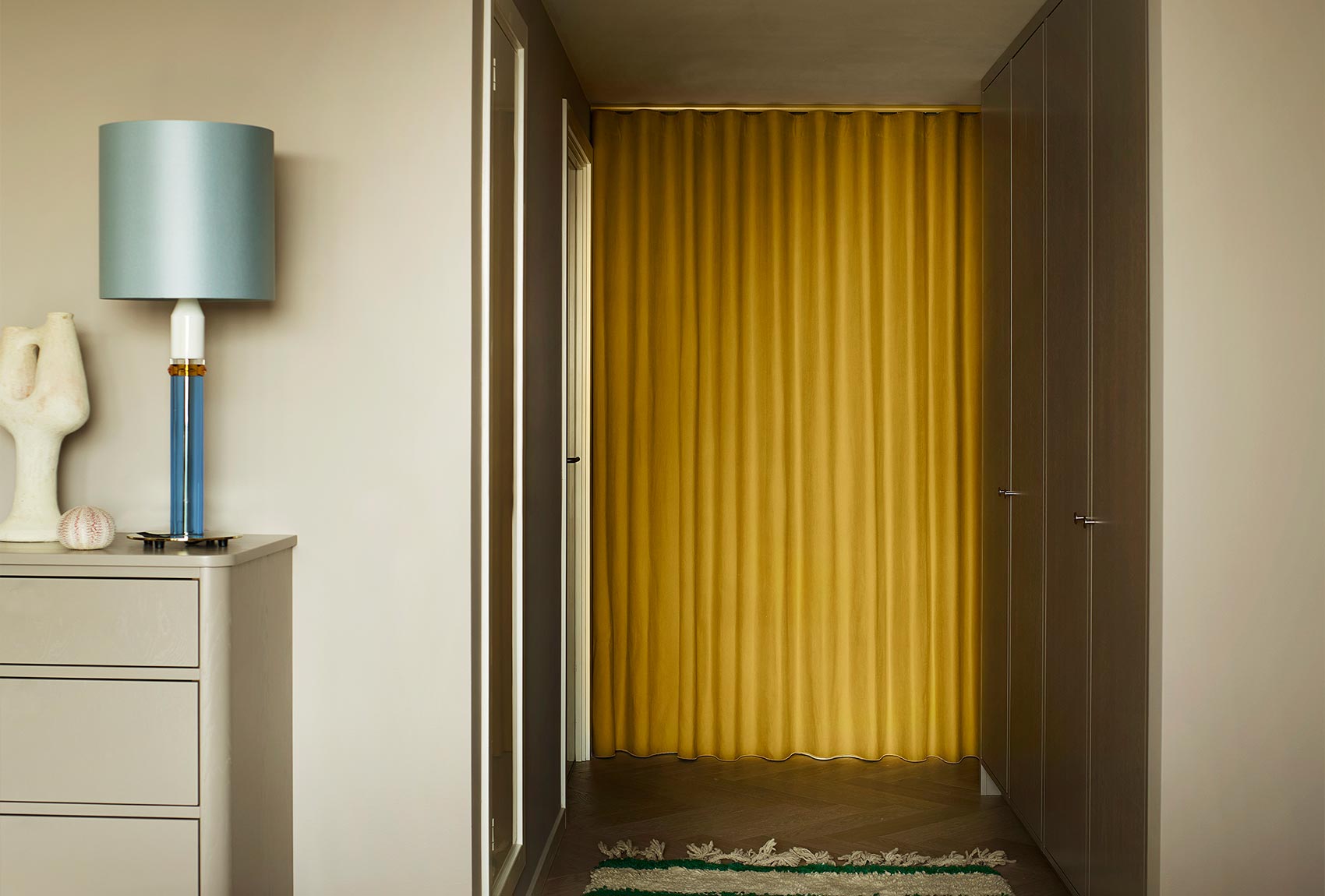
Sidsel employs a strategically placed wave curtain to conceal the apartment’s back exit and improve acoustics in the bedroom.
2: TEXTILES ADD SOFTNESS AND IMPROVE ACOUSTICS
In addition to the use of colours, a new trend has been emerging in Scandinavian interior design—a trend that, according to Sidsel Zachariassen, hasn’t reached its peak yet.
“Fifteen years ago, wallpapers were the major trend in interior design, but today, it’s the long curtains that significantly influence decor. The large smooth walls serve as canvases for textile artworks, creating softness through both colour and material.”
This trend is not just about aesthetics; it addresses the issue of acoustics in new constructions. “The challenge of poor acoustics in new buildings is profound. You won’t believe how terrible the acoustics are in many of the new constructions I am hired to decorate. Despite advances like acoustic ceilings and sound-dampening glass, hard surfaces can still reverberate sound intensely.”
Sidsel’s solution is straightforward:
“Combat poor acoustics with thick curtains and plush rugs. Generally, thicker materials with greater bulk are most effective at absorbing sound, but all textiles can significantly enhance acoustic quality.”

Foto: Privat

3: PLAN MATERIALS CAREFULLY
Every project starts with a comprehensive materials plan, meticulously developed through close dialogue with homeowners to capture the style they envision and their intended use of the space. This process is foundational to Sidsel’s work.
“I begin each design with a detailed plan for material flow,” Sidsel explains.
“This ensures that the materials complement each other, creating a cohesive aesthetic rather than clashing.” She cautions against the excessive mixing of different types of wood or materials:
“It can be challenging to harmonize different types of wood, and too much mixing can disrupt the material flow, undermining the visual harmony of the space.”
However, there is no foolproof guide to which colours and materials will work together, as the interaction between two materials can be influenced by all other chosen materials. Therefore, there is only one approach according to Sidsel:
“Plan which materials will form the cornerstone of your design. Don’t be afraid to mix, but consider the combinations very carefully before you begin.”
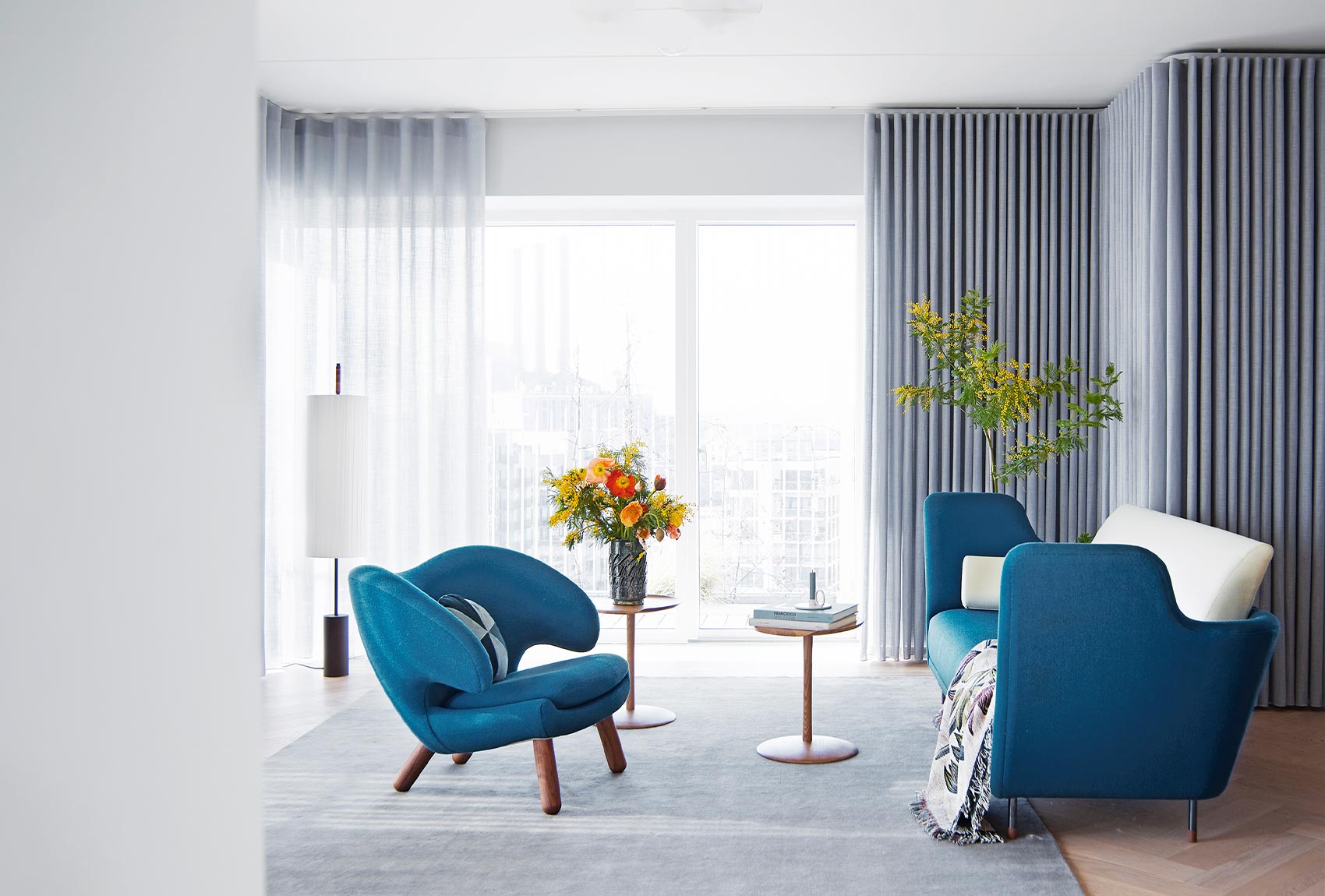
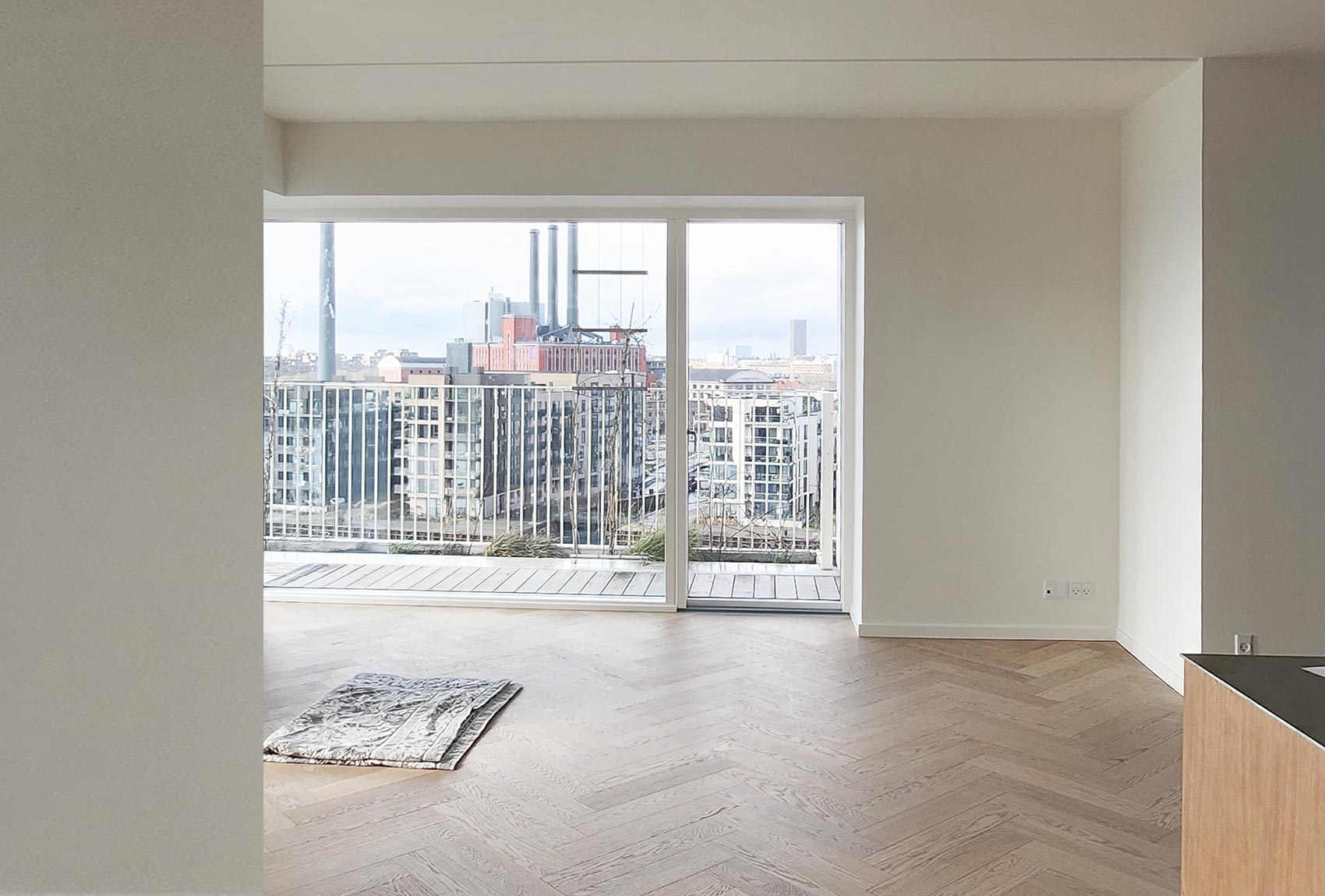
4: SOFTEN THE ANGULAR AESTHETIC
“We live in a fast-paced world, and this is particularly evident in construction, where curved, human-made shapes are giving way to practical, right-angled forms, often resulting in a harsh aesthetic,” notes Sidsel Zachariassen. However, she offers a creative solution that not only softens the hard edges but also is cheaper than changing the floor plan:
“I increasingly use curtain installations in my designs, and not just for sun shading. Curtains provide a versatile method to create spaces within spaces. Curtain tracks can be bent to almost any shape, serving either as sculptural installations or to soften hard corners—and it’s much cheaper than restructuring walls.”
“If you aim to soften a room, opt for a curtain track that traces the room’s outer edges, and mount panels of light, transparent fabric. It doesn’t need to cover the entire room—just enough so that the panels can strategically soften the space and filter sunlight as required.”
This approach is exemplified in the kitchen-dining area, where a AP 2005 curtain track in the matte-gray, “Super Silver” colour runs along the outer walls. The curtains are mounted in panels so that they can be placed freely around corners and in sections along the wall.
As a final touch, Sidsel asked Stillings’ technicians to craft all the curtain track’s corners with precise radius 10 bends, ensuring that the corners are soft and subdued, yet not shapeless. In Sidsel’s designs, nothing is left to chance.

AP 2005 / Super Silver
5: CREATE COZINESS
For a stylist, every type of project brings its own opportunities and challenges. Sidsel Zachariassen identifies a particular problem that recurs with new constructions:
“One aesthetic issue I often encounter in new builds is that it can be difficult to create coziness. Often, there are neither windowsills nor quirky decorative shelves built into the architecture, leaving no places to put things that add a cozy atmosphere to the decor.”
Sidsel frequently collaborates with carpenters and designers to create bespoke furniture:
“I often use carpenters or furniture designers to custom-make furniture pieces, which can add some uniqueness. It is easy to see when a piece of furniture is made with a particular home in mind.”
Both the sideboard in the bedroom and the bookcase in the living room were specially designed for the apartment at Islands Brygge by Handcrafted. The colour and finish of both were chosen to match the wall colour to emphasize the connection with the architecture.
“It’s about making a space not only beautiful but also livable and cozy,” Sidsel emphasizes. “Fortunately, no one lives in a completely strict and clinical environment. Good interior design should accommodate both homely trinkets and cozy details. So, remember to create space for coziness in your decor, but also keep in mind that more isn’t always better. Our most cherished items often stand out best when they have a bit of elbow room.”

AP 2005 / Super Silver

6: YOUR NEW BUILD WILL NEVER BE A CLASSIC COTTAGE
The last piece of advice Sidsel Zachariassen gives us is perhaps the most important. It is a principle that she always follows herself and never deviates from:
“Before I start designing, I always align expectations with the client. If you want a classic cottage, then buy a classic cottage, because your new build will never be anything but a poor imitation, and it will show. But if you want a newly built home with all the practicalities and modern technology that comes with it, then an interior designer can help you make it truly unique; even if it starts out with yet another standard white interior.”


According to Sidsel Zachariassen, there are two common misconceptions about interior designers:
MYTH 1: HIRING AN INTERIOR DESIGNER IS EXPENSIVE
“Many believe that hiring an interior designer is incredibly expensive. However, just like many other services, there are various levels and approaches available. An interior designer can help create a detailed plan for your decor that you can implement gradually as your finances and time allow. This option is generally less costly than having the designer also execute and coordinate all the work. Conversely, while more expensive, fully outsourcing this work can save a significant amount of your own time, which might be more compatible with your work life.”
MYTH 2: AN INTERIOR DESIGNER WILL MAKE YOUR HOME IMPERSONAL
“A good interior designer will always strive to align with your personal taste and ensure your desires for the decor are met. Ultimately, you are the one who will live in the space. Additionally, a responsible designer will communicate openly if there’s a mismatch in style preferences, as different designers have unique approaches and specializations. If you’re concerned that an interior designer might make your home feel impersonal, rest assured that a professional won’t override your specific wishes but will rather enrich your vision with their expert perspectives.”
ABOUT SIDSEL ZACHARIASSEN
Sidsel “Z” Zachariassen
Interior Decorator, educated at Illums Bolighus / Royal Copenhagen.
Has been independently designing interiors since 2002.
Owner of Zachariassen Indretning